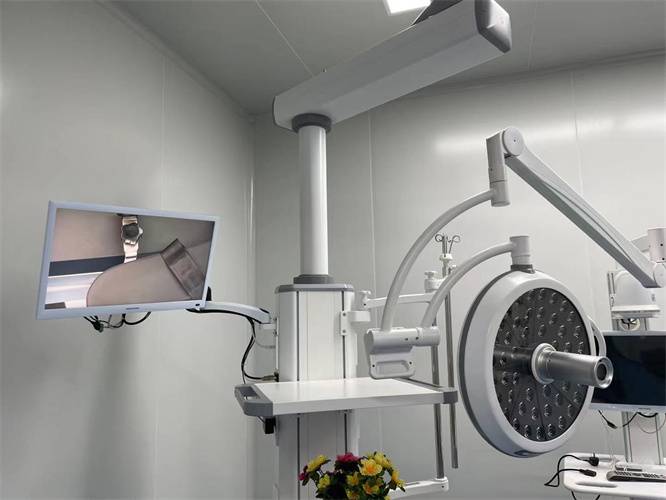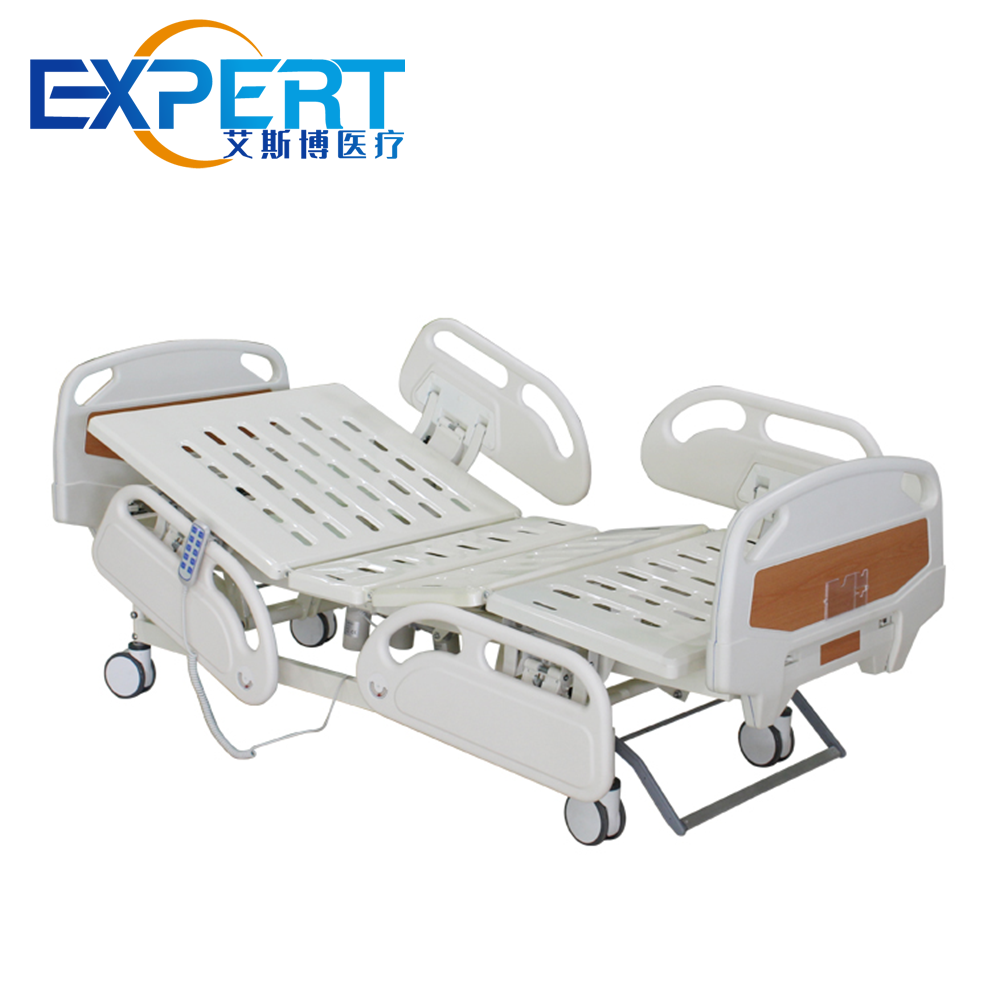Endereço
304 North Cardinal St.
Dorchester Center, MA 02124
Horas de trabalho
Segunda a sexta: 7h00 - 19h00
Fim de semana: 10h - 17h
Shandong Expert Medical Equipment Group
O Expert Medical Equipment Group, como um dos mais profissionais fabricantes e exportadores de equipamentos médicos da China, insiste em fornecer produtos de qualidade superior, segurança e confiabilidade, bem como os melhores serviços pós-venda para o mercado mundial.


A série de mesa cirúrgica Expert Medical atende totalmente aos requisitos de cirurgia geral, coração, cabeça, pescoço, cavidade torácica e outras operações cirúrgicas.
As séries de lâmpadas cirúrgicas Expert Medical estão envolvidas em vários campos de iluminação cirúrgica e sistema de iluminação auxiliar.
Especialistas médicos fornecem vários tipos de leitos de UTI e enfermagem hospitalares que são verdadeiramente bonitos e duráveis de usar.
São estações de trabalho ideais para gases medicinais, fontes de alimentação, plataformas de instrumentos, racks de bombas de infusão e terminais de saída de rede em hospitais.
Produtos médicos não são permitidos com irregularidades. Possuímos o melhor engenheiro técnico para participar do projeto e avaliação de produtos, comprometido em fornecer um serviço eficiente e de alto nível a todos os clientes.
Além da fabricação de equipamentos médicos, também nos engajamos na pesquisa e desenvolvimento de indústrias modernas e de alta tecnologia, apoiamos instituições médicas para melhorar o diagnóstico e o efeito do tratamento em várias doenças.
A Expert Medical está envolvida na fabricação de equipamentos médicos e serviços técnicos há mais de 17 anos, continua a fornecer informações oportunas de mercado e suporte técnico a todos os clientes, com equipe técnica profissional para atender a vários requisitos de pré-venda e serviço pós-venda.
A Expert Medical está localizada na cidade de Qufu, província de Shandong, que é o maior cluster da indústria de equipamentos cirúrgicos na China e até mesmo no mundo. 200 especificações.

NÓS AMAMOS O QUE FAZEMOS
É melhor ser um bom especialista em um negócio do que a média em vários setores.
Nossa equipe de projeto e fabricação de equipamentos médicos está bem ciente das necessidades dos pacientes e médicos. Portanto, estamos confiantes de que somos especialistas na indústria de equipamentos médicos.
Somos um dos principais fabricantes de equipamentos médicos de alta tecnologia e os produtos são amplamente distribuídos em hospitais e clínicas em todo o mundo e apoiados por uma extensa rede de distribuidores.
Todas as etapas de produção de nossos produtos estão sob estrito controle e cada etapa é submetida a testes e controles de qualidade profissionais e precisos. Todos os produtos têm desempenho quase perfeito na prática médica.
Além de equipamento operacional cirúrgico básico e instrumentos hospitalares, também produzimos e fornecemos equipamentos de diagnóstico médico, tratamento digital e dispositivo de recuperação e outras séries de produtos, centenas de variedades e especificações para atender a vários requisitos. pare o fornecedor de soluções de equipamentos médicos.
Como um fabricante profissional de equipamentos médicos completos, a EXPERT MEDICAL possui uma cadeia de suprimentos integrada para fornecer uma gama completa de serviços de equipamentos médicos para salas de cirurgia, áreas de cuidados intensivos e instituições de cuidados primários, etc., com tecnologia de produção moderna e controles de custo rigorosos, nós fornecemos os produtos mais econômicos para todos os nossos clientes.

De camas básicas, móveis médicos e carrinhos a equipamentos para sala de cirurgia, testes diagnósticos e fisioterapia de reabilitação, a experiência da equipe de equipamentos médicos especializados em gerenciamento de riscos e projetos nos torna o fornecedor preferencial para hospitais em mais de 70 países. Também continuaremos a aproveitar todas as nossas vantagens e a fornecer equipamentos médicos profissionais.
Nosso eixo principal é a inovação constante; estamos comprometidos com o desenvolvimento e implementação contínuos de novos padrões de qualidade de produto e eficiência de serviço. Acumulamos muitas patentes e certificações técnicas registradas. À medida que nos esforçamos para fornecer a melhor experiência aos nossos clientes e contribuir para a melhoria e modernização dos sistemas de saúde em todo o mundo.
A EXPERT MEDICAL não apenas vende produtos, mas também fornece treinamento e educação de instalação adequados para ajudar os clientes a realizar trabalhos de alto padrão. Há um elemento ético em tudo isso, já que a EXPERT MEDICAL defende os valores tradicionais de integridade e honestidade, enquanto sempre trata todos os clientes como nossos parceiros de cooperação amigável.
Entendemos a intenção original e as razões pelas quais os clientes personalizam equipamentos médicos, para que possamos fornecer o equipamento mais adequado. Temos uma equipe profissional de p & d para projetar e atender às solicitações de diferentes clientes sobre equipamentos médicos personalizados e fornecer produtos com especificações diferentes de acordo com diferentes solicitações para garantir maior eficiência de trabalho. equipamentos e produtos profissionais.


A EXPERT MEDICAL se dedica a estabelecer um sistema de qualidade tranquilizador em todo o processo de fabricação de equipamentos médicos. Por esse valor fundamental, somos responsáveis por nossos clientes e por toda a indústria.
This blog explores why a hospital style bed can significantly...
consulte Mais informaçãoThis blog explores the multifaceted benefit of comfortable hospital beds...
consulte Mais informaçãoChoosing the right medical hospital bed is more than just...
consulte Mais informaçãoThis blog explores the importance of advanced medical lighting, its...
consulte Mais informação
A série de mesa cirúrgica Expert Medical atende totalmente aos requisitos de cirurgia geral, coração, cabeça, pescoço, cavidade torácica e outras operações cirúrgicas.

As séries de lâmpadas cirúrgicas Expert Medical estão envolvidas em vários campos de iluminação cirúrgica e sistema de iluminação auxiliar.

Os médicos especializados fornecem vários tipos de leitos de UTI e enfermagem hospitalar, com um design verdadeiramente bonito e duráveis de usar.

Quer se trate de cuidados médicos diários ou cirurgia, os carrinhos cirúrgicos da Expert Medical podem ajudá-lo a trabalhar com mais eficiência.

Com variedade de macas estruturais e funcionais, as macas Expert fornecem suporte de força no resgate de emergência e no trabalho de transporte de pacientes.

Os outros dispositivos médicos da Expert Medical trabalham juntos para ajudar a construir um sistema médico completo.
Estamos empenhados em fornecer um modelo de vendas completo para o cliente; Damos um cuidado mais importante à satisfação do nosso cliente.
